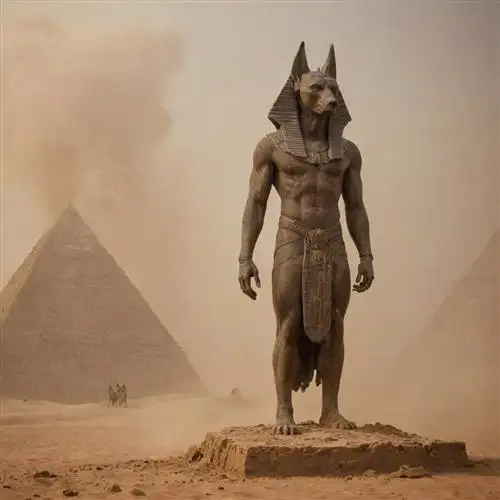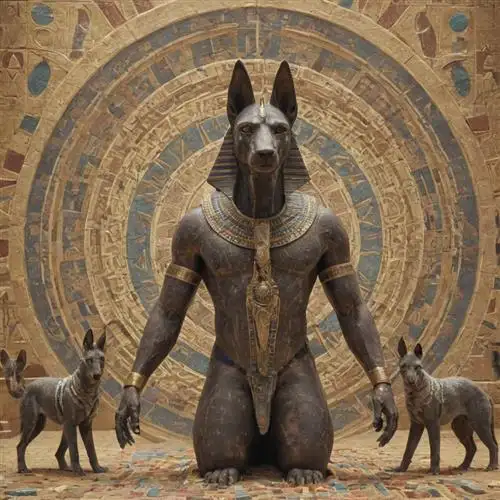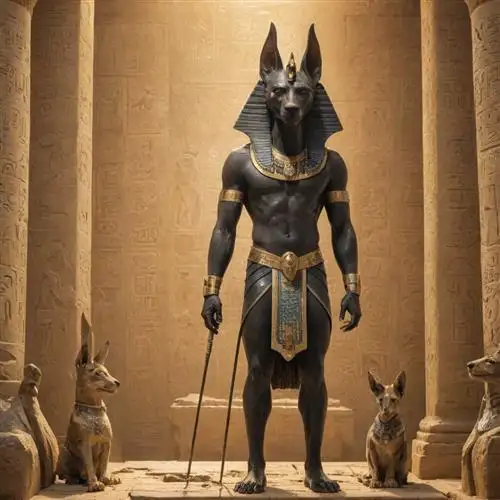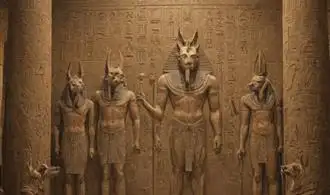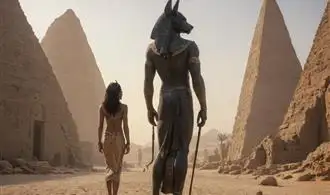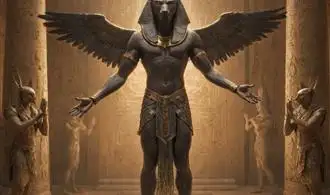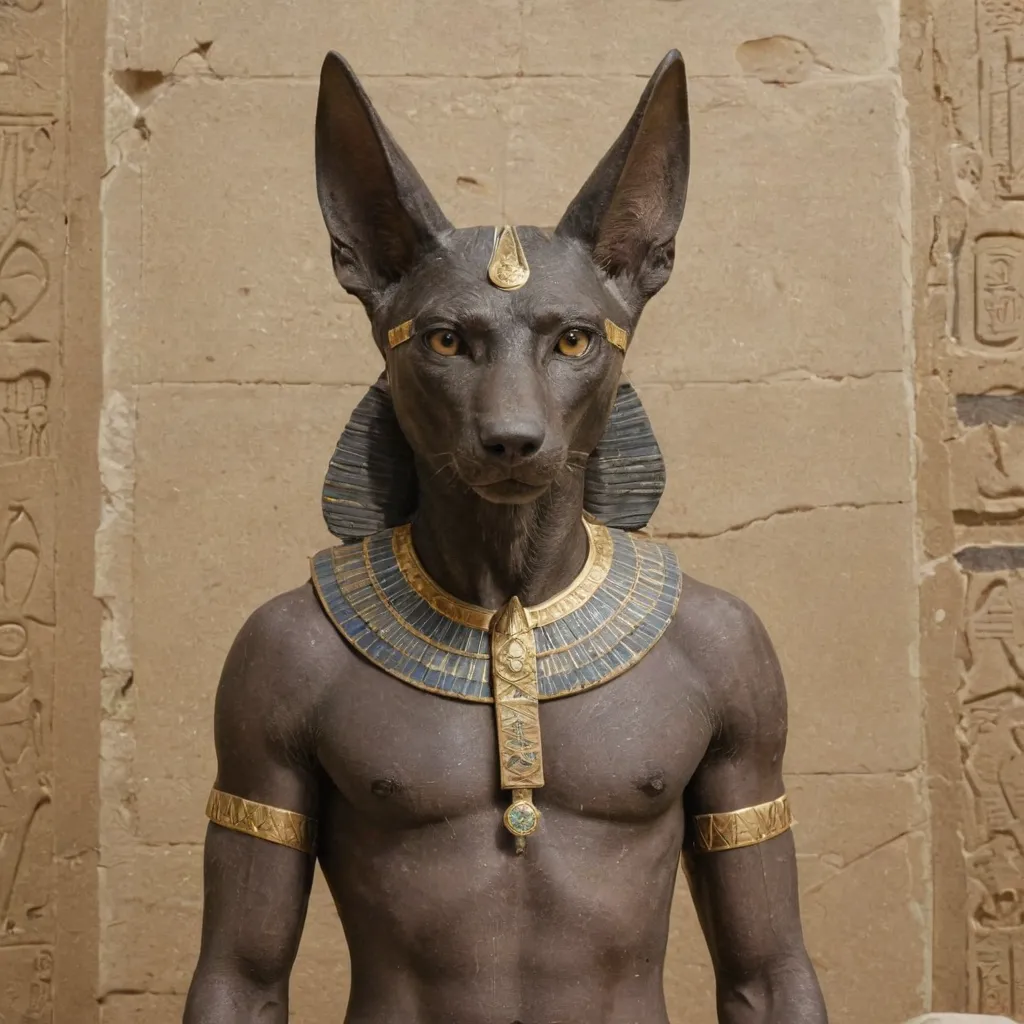
The Enigmatic Origins of Anubis
Anubis, the iconic jackal-headed deity of ancient Egyptian mythology, has long captivated the imagination of scholars and enthusiasts alike. Tracing the origins of this enigmatic figure is a fascinating journey through the rich tapestry of ancient Egyptian culture and beliefs. While the exact origins of Anubis remain shrouded in mystery, piecing together the available evidence provides valuable insights into the evolution and significance of this revered deity.
One of the earliest known depictions of Anubis dates back to the First Dynasty, around 3100-2890 BCE, where he was associated with the embalming and mummification process. This early association with the afterlife and the crucial role of the jackal-headed god in the journey of the deceased suggests that Anubis's origins may be deeply rooted in the ancient Egyptians' profound reverence for the dead and their belief in the importance of proper funeral rites.
Scholars have long debated the possible origins of Anubis, with some proposing that he may have evolved from the earlier worship of local jackal-like deities in various regions of ancient Egypt. These regional deities, such as Wepwawet, who was also associated with the afterlife and funerary rituals, may have been gradually assimilated into the more widely recognized figure of Anubis.
Another intriguing hypothesis suggests that Anubis may have been influenced by the emergence of the cult of Osiris, the god of the underworld and resurrection. As the cult of Osiris gained prominence, Anubis's role as the guardian of the dead and the embalming process may have become more closely intertwined with the mythology surrounding Osiris and the afterlife.
The iconography of Anubis, with his distinctive jackal-headed form, has also been the subject of much scholarly debate. Some researchers believe that the jackal-like appearance of Anubis may have been inspired by the actual presence of jackals and wild dogs in the ancient Egyptian landscape, particularly in the area around Abydos, where Anubis was believed to have originated.
Furthermore, the association of Anubis with the color black, which was often linked to the fertile soil of the Nile Valley, may have contributed to the deity's connection with the afterlife and the process of mummification, where the body was prepared for its journey to the next world.
The Evolving Roles of Anubis in Ancient Egyptian Mythology
Anubis, the jackal-headed deity, held a profound and multifaceted role within the intricate tapestry of ancient Egyptian mythology. As one of the oldest and most revered deities, Anubis' significance evolved and expanded over the course of Egypt's rich history, reflecting the changing needs and beliefs of the Egyptian people.
At the heart of Anubis' evolution was his association with the afterlife and the sacred rituals of mummification. As the god who presided over the embalming process, Anubis was responsible for guiding the deceased through the treacherous journey to the afterlife. This role was crucial, as the ancient Egyptians believed that the successful preservation of the body was essential for the soul's transition to the next world.
However, Anubis' influence extended far beyond the realm of the dead. In certain periods, he was also revered as a protector and guardian, watching over the living and offering guidance in times of uncertainty. This multifaceted nature is reflected in the various epithets and attributes associated with Anubis, such as "He Who is in the Place of Embalming," "Lord of the Sacred Land," and "Conductor of Souls."
The evolving roles of Anubis were also influenced by the shifting power dynamics and theological developments within ancient Egyptian society. As the pantheon of deities expanded and the hierarchy of the divine realm became more complex, Anubis' position and relationships with other gods underwent transformations.
For instance, during the New Kingdom, Anubis' role as the primary deity responsible for mummification and the afterlife was challenged by the rising prominence of Osiris, the lord of the underworld. In response, Anubis' role evolved, and he became more closely associated with Osiris, serving as his faithful companion and protector in the afterlife.
Furthermore, Anubis' iconography and symbolism underwent subtle changes over time, reflecting the evolving perceptions and beliefs of the ancient Egyptians. The jackal-headed figure, once a symbol of death and decay, came to be seen as a benevolent and compassionate guardian, guiding the deceased through the perilous journey to the afterlife.
The Iconography and Symbolic Significance of Anubis
Anubis, the jackal-headed deity of ancient Egyptian mythology, holds a profound and multifaceted significance within the pantheon. This enigmatic figure's iconography and symbolism offer a glimpse into the intricate beliefs and practices of the ancient Egyptians, shedding light on their perspectives of the afterlife, death, and the complexities of the human experience.
Anubis' distinctive canine head is a direct representation of his animal form, which was believed to hold deep spiritual and metaphysical associations. The jackal, a scavenger that frequented the desert and graveyards, was seen as a creature that traversed the realms of the living and the dead, making Anubis a natural choice as the deity responsible for the preparation and protection of the deceased.
The black color of Anubis' skin is another integral aspect of his iconography, symbolizing both the fertile soil of the Nile River valley and the decomposition of the body. This duality represents Anubis' role as a gatekeeper between life and death, guiding the deceased through the process of mummification and ensuring their safe passage to the afterlife.
Anubis' primary responsibilities included presiding over the process of mummification, weighing the deceased's heart against the feather of truth, and leading the dead to the underworld. His involvement in these critical rituals solidified his position as a pivotal figure in the ancient Egyptian belief system, as he was entrusted with the sacred duty of ensuring the successful transition of the soul from the physical to the spiritual realm.
Beyond his funerary duties, Anubis also held symbolic significance in the realms of protection, guidance, and transformation. As a guardian of the dead, he was believed to safeguard the deceased from the dangers and uncertainties of the afterlife. Additionally, Anubis' role in the weighing of the heart ceremony, where the deceased's moral worth was determined, positioned him as a symbol of justice, truth, and the impartial assessment of one's actions in life.
The Rituals and Practices Associated with Anubis
Anubis, the Egyptian god of the dead, held a pivotal role in the ancient Egyptian funerary rites and practices. As the guardian of the dead and the embalming process, Anubis was central to the intricate rituals that ensured the safe passage of the deceased into the afterlife. One of the most significant rituals associated with Anubis was the mummification process.
The mummification process was a complex and meticulous undertaking, with Anubis playing a crucial role. Priests who performed the mummification rites would don the jackal-headed mask of Anubis, symbolically embodying the deity. They would then carefully remove the internal organs of the deceased, preserving them in canopic jars. The body would then be dried, wrapped in linen, and anointed with sacred oils and resins, all while invoking the name of Anubis.
Another important ritual linked to Anubis was the "Opening of the Mouth" ceremony. This ritual, performed during the funeral rites, was believed to restore the senses and the ability of the deceased to speak, breathe, and consume offerings in the afterlife. The priest, again wearing the mask of Anubis, would touch various parts of the mummy's face and body with a special ritual tool, symbolically reanimating the deceased.
Anubis was also associated with the weighing of the heart ceremony, a crucial step in the judgment of the dead. In this ritual, the heart of the deceased was weighed against the feather of truth, representing the moral character of the individual. Anubis, as the guardian of the scales, would oversee this process, ensuring the fairness and accuracy of the judgment.
Beyond the funerary rites, Anubis was also invoked in various protective and healing rituals. Amulets and talismans bearing the image of Anubis were believed to provide protection and guidance for the living and the dead. Priests and healers would call upon Anubis to aid in the treatment of various ailments and to ward off evil spirits.
The Enduring Legacy and Modern Interpretations of Anubis
Anubis, the ancient Egyptian deity associated with mummification and the afterlife, has captivated the imagination of people for millennia. As one of the most iconic and recognizable figures in Egyptian mythology, Anubis' legacy continues to be celebrated and reinterpreted in various forms, from academic scholarship to contemporary art and popular culture.
At the core of Anubis' enduring significance is his role as the god of the dead, the guardian of the necropolis, and the protector of the deceased during the embalming process. In ancient Egyptian funerary rituals, Anubis was responsible for the mummification of the dead, ensuring the preservation of the body and the soul's successful transition to the afterlife. This pivotal function cemented Anubis' place as a central figure in the pantheon of Egyptian deities and contributed to the development of the elaborate burial practices that have captivated the world.
Beyond his primary role in mummification, Anubis was also associated with other important aspects of the Egyptian belief system. As the god of the dead, he was believed to weigh the hearts of the deceased against the feather of Maat, the goddess of truth and justice, to determine their worthiness for the afterlife. This process, known as the "Weighing of the Heart," was a crucial step in the journey of the soul, and Anubis' presence as the overseer of this ritual underscored his importance in the Egyptian conception of the afterlife.
In modern times, the enduring legacy of Anubis has been celebrated and reinterpreted in various forms. In academic circles, Anubis continues to be the subject of extensive research and scholarly analysis, with Egyptologists and historians delving into the nuances of his iconography, mythology, and cultural significance. These studies have shed light on the complex and multifaceted nature of Anubis, revealing the depth and sophistication of ancient Egyptian beliefs and practices.
Concurrently, Anubis has also captured the imagination of artists and popular culture enthusiasts. In the realm of visual arts, contemporary artists have drawn inspiration from Anubis' iconic jackal-headed form, incorporating it into their work and exploring new interpretations of the deity's symbolism and significance. From sculptures and paintings to tattoos and fashion designs, Anubis' image has become a ubiquitous presence in the creative landscape, showcasing the enduring appeal of this ancient Egyptian icon.
Furthermore, Anubis has also found a prominent place in the world of literature, film, and video games. Authors, screenwriters, and game developers have embraced the rich mythology surrounding Anubis, weaving his story and symbolism into their narratives. These modern interpretations not only pay homage to the ancient Egyptian legacy but also recontextualize Anubis' significance for contemporary audiences, ensuring that his influence continues to resonate in the 21st century and beyond.

